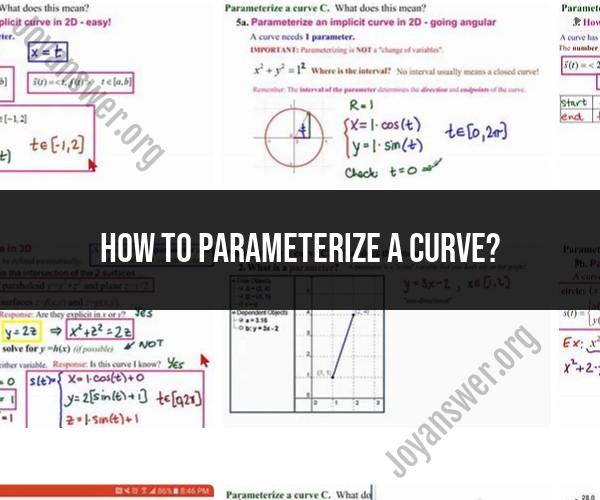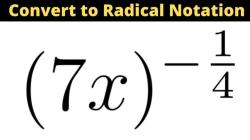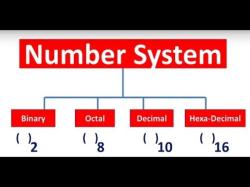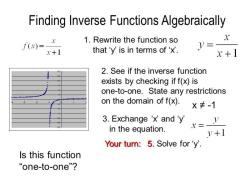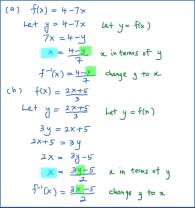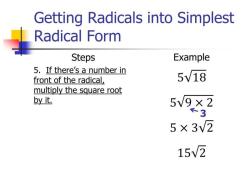How to parameterize a curve?
Parameterizing a curve is a mathematical technique used to represent a curve in space as a set of equations involving one or more parameters. The parameterization provides a way to describe points along the curve by varying the parameter(s). This concept is particularly useful in mathematics, physics, computer graphics, and engineering for modeling and analyzing curves and paths. Here's how to parameterize a curve:
1. Define the Curve: Start by defining the curve you want to parameterize. This could be a simple curve in the xy-plane or a more complex curve in three-dimensional space.
2. Choose a Parameter(s): Select one or more parameters that will vary as you move along the curve. Parameters are usually denoted by letters such as "t," "s," or "u." The choice of parameter(s) depends on the curve's complexity and the convenience of representation.
3. Express Coordinates in Terms of the Parameter(s): Write equations that express the x, y, and z (if applicable) coordinates of points on the curve as functions of the chosen parameter(s). For example, if you have a curve in the xy-plane, you might write:
- x = f(t)
- y = g(t)
If you're working with a curve in three-dimensional space, you'll need to add a third equation:
- x = f(t)
- y = g(t)
- z = h(t)
These equations describe how the coordinates of points on the curve change as the parameter "t" varies.
4. Determine the Range of the Parameter(s): Specify the range or domain for the parameter(s). This indicates the values over which the parameter(s) vary. The range depends on the specific problem or context. It could be a finite interval like [a, b] or an infinite range like (-∞, ∞).
5. Representing the Curve: With the parameterization equations in place and the range of the parameter(s) determined, you can now represent the entire curve by varying the parameter(s) within the specified range. For each value of the parameter(s), you obtain a corresponding point on the curve.
Example:Let's parameterize a simple curve, a circle, using a single parameter "θ" (theta). The equation of a circle centered at the origin with radius "r" is given by:
x² + y² = r²
To parameterize this circle, we can use polar coordinates, where "θ" represents the angle from the positive x-axis to the point on the circle, and "r" is the radius:
- x = r * cos(θ)
- y = r * sin(θ)
Here, "θ" varies from 0 to 2π to cover the entire circle.
Parameterizing curves is a fundamental concept in mathematics and has numerous applications. For instance, in physics, parameterized curves are used to describe the trajectories of objects in motion. In computer graphics, parameterization is used to create animations and model complex shapes. In engineering, it's used to describe the paths of mechanical components. The choice of parameterization method and parameters depends on the specific problem and the ease of analysis and computation.
Parameterizing a Curve: Methods and Approaches
There are a number of different methods and approaches for parameterizing a curve. Some of the most common methods include:
- Using rectangular coordinates: This is the most straightforward approach, and it involves representing the curve as a function of its rectangular coordinates, x and y. For example, the circle with radius r and center at (x0, y0) can be parameterized by the following equations:
x(t) = r * cos(t) + x0
y(t) = r * sin(t) + y0
where t is a parameter that ranges from 0 to 2π.
- Using polar coordinates: Polar coordinates are another way to represent a curve. In polar coordinates, a point is represented by its distance from the origin (r) and its angle relative to the positive x-axis (θ). For example, the circle with radius r and center at (x0, y0) can be parameterized by the following equations:
x(t) = r * cos(t) + x0
y(t) = r * sin(t) + y0
where t is the angle.
- Using other coordinate systems: Other coordinate systems, such as cylindrical coordinates and spherical coordinates, can also be used to parameterize curves. The specific coordinate system to use will depend on the nature of the curve.
Transforming Curves into Parametric Equations
Once a curve has been parameterized, it can be transformed into other parametric equations using a variety of techniques. For example, to translate a curve by a vector (a, b), the following transformation can be used:
x'(t) = x(t) + a
y'(t) = y(t) + b
To scale a curve by a factor of k, the following transformation can be used:
x'(t) = kx(t)
y'(t) = ky(t)
To rotate a curve by an angle θ, the following transformation can be used:
x'(t) = x(t) * cos(θ) - y(t) * sin(θ)
y'(t) = x(t) * sin(θ) + y(t) * cos(θ)
These are just a few examples of the many ways to transform curves into parametric equations.
The Art of Curve Parameterization
Curve parameterization can be a powerful tool for solving problems in geometry, calculus, and physics. However, it is important to note that there is no one-size-fits-all approach to parameterizing curves. The best method to use will depend on the specific curve and the problem at hand.
Here are some tips for parameterizing curves:
- Choose a parameter that makes sense: The parameter should be something that naturally describes the curve. For example, if you are parameterizing a circle, you might choose the angle θ as the parameter.
- Use transformations to simplify the problem: Transformations can be used to simplify the process of parameterizing a curve. For example, if you are parameterizing a shifted or scaled circle, you can first translate or scale the circle to the origin and then parameterize the unit circle.
- Be creative: There is no one right way to parameterize a curve. Experiment with different methods and see what works best for you.
With a little practice, you will be able to master the art of curve parameterization and use it to solve a wide range of problems.
